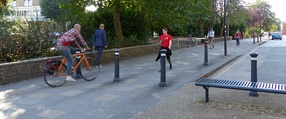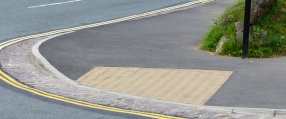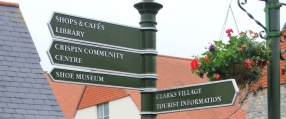New Footway Provision
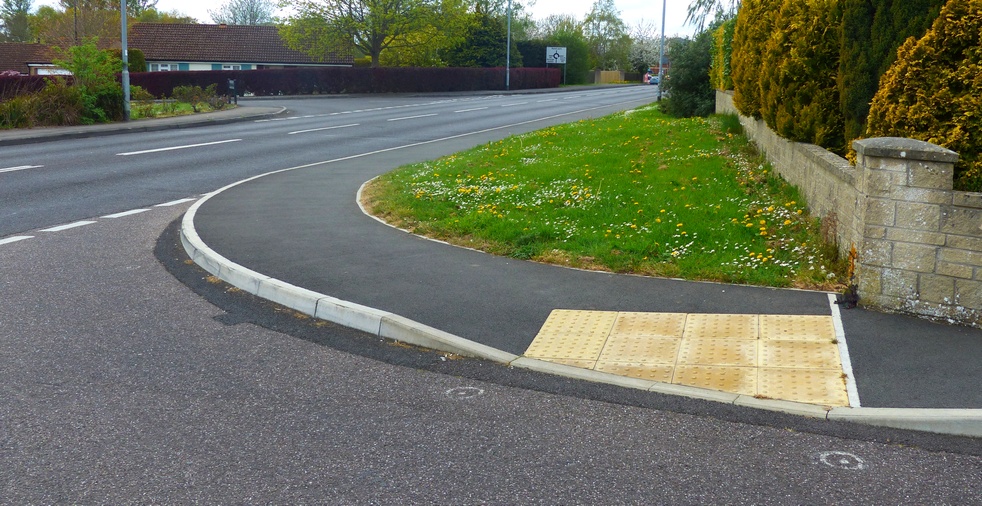
A new footway creates a paved area for pedestrians. This is normally added to the side of an existing road, with a kerb for separation. Footways which are wide enough can be designated as ‘shared space’ which means both pedestrians and cyclists can use the facility.
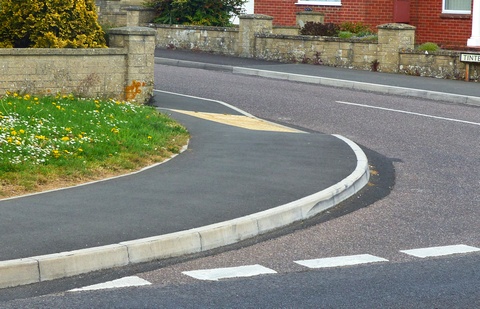
Disadvantages
- If space for the footway cannot be taken from the road itself (because it is already too narrow), the footway will be more difficult to build. To create space for the footway, a lot of vegetation may need to be cleared, or additional land may need to be purchased – both these options can be very expensive
- Creating a footway can create the feeling of a ‘main road’ to drivers, who may drive faster as a result. On a road with no footway, drivers may take extra caution and drive more slowly - this is because they might expect other road users to be in the road
- Some people may find the footway detracts from the nature of the countryside, and makes the area feel more ‘built up’
- Footways or paths which are designated as 'shared space' must include adjacent signage, which can add to sign clutter
Restrictions
- Creating a footway may be prohibitively expensive if the Council would need to purchase additional land by the side of the road
There's also some general restrictions to note for all schemes
Advantages
- Providing a new footway could greatly improve safety for pedestrians
- Footways will be especially important for elderly or child pedestrians who might normally find it difficult to move out of the way of approaching vehicles on a road without a footway
- Similarly, wheelchair and push chair users may find footways are a necessity, as they may be unable to move out of the way of approaching vehicles
- Providing a footway may encourage people to walk around their local area more, which improves their health, and reduces traffic
Effectiveness
Some people will feel much safer if they are walking on a footway, rather than walking in the road. This may encourage people to walk when they would not have considered it before.
If the footway is designated as shared space, this may encourage people to cycle when they would not consider it before.
Some walkers may find it difficult to move out of the way of vehicles when there is no footway. This could be wheelchair users, those with pushchairs, or the very young or elderly. These people could see the greatest benefit when a new footway is provided.
Research has suggested that new shared space footways can provide good value for money when feelings of increased safety and the health benefits of physical activity are taken into account.
Footpaths
Footpaths are separate from footways, which are always beside a road. Foot paths cut across land, and create routes to popular areas or facilities. They could create a really valuable shortcut for pedestrians, which greatly reduce journey times. Footpaths can be valuable in both rural and urban areas.
Cycle paths
Footpaths can be converted or built to accommodate cyclists too. To do this, Somerset County Council complete a legal process, and ensures the path meets some minimum requirements. It may be determined that some signage and a line down the centre of the path is necessary to separate pedestrians and cyclists.
Cycle paths are especially useful because they provide an alternative to cycling on the road - some bicycle users (especially younger and older people) don't like to cycle in the road because they find it intimidating.
Benefits of paths
Paths are especially valuable because they are completely free of vehicle traffic. The environment is, generally, far more pleasant than a footway by the side of a road. This encourages people to use the path - both for leisure and for commuting - either by foot or by bicycle. More people travelling by foot or by bicycle (rather than using their car) helps people to stay active and healthy, and reduces congestion and pollution.
Advanced information
The statement that shared space footways can provide good value for money is based on research from Ireland (Laird et al. 2013). This research was based on single carriageway inter-urban routes (National Secondary routes), and is only applicable to these types of roads – it is not applicable to narrow rural lanes. A thorough methodology was used, and findings from Ireland will be readily transferable to the U.K.. The research found that in 53% of cases, the benefits of constructing a shared use cyclepath and footway exceeded the costs. For sites where the upgrade was already proposed, this figure rose to 74%. This research provides rough guidance that shared use cycle and footways can have a favourable cost / benefit ratio, however the situation will vary greatly on a case by case basis.
References
Laird, J., Page, M., Shen, S. (2013) The value of dedicated cyclist and pedestrian infrastructure on rural roads. Transport Policy 29 pp. 86-96
